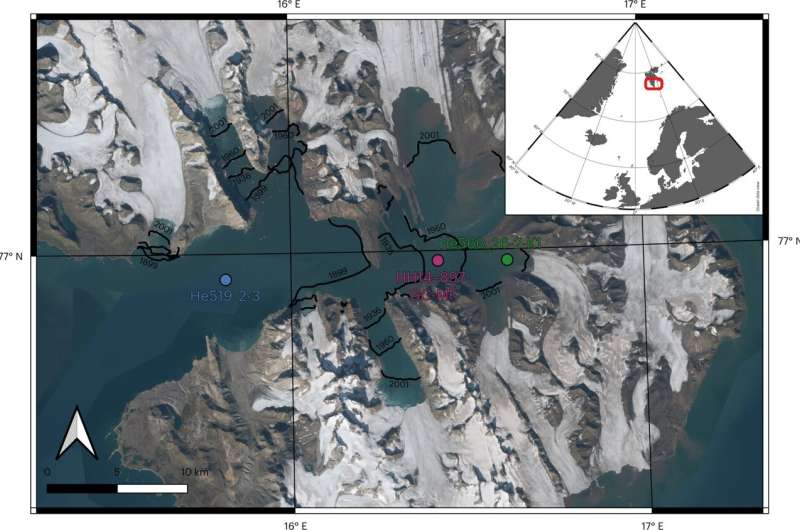
Map of Hornsund Fjord in Svalbard with core locations. Credit: Nature Geoscience (2023). DOI: 10.1038/s41561-023-01198-z
New findings by Prof Witold Szczuciński, of Adam Mickiewicz University, on the carbon cycle in nature have been published in Nature Geoscience.
Glaciers erode rocks and transport them to fjords. These rocks, especially sedimentary rocks, often contain carbon. It was thought that this carbon is not used by organisms and gets buried with the sediments at the bottom of the fjords without any significant effect on the carbon balance in the seas and in the atmosphere.
However, the latest research results of a German-Norwegian-Polish team of scientists (Manuel Ruben, Gesine Mollenhauer and co-authors) indicate that microbes living in sediments at the bottom of the fjords can use petrogenic carbon, causing it to be reintegrated into the biological cycle of the element.
The research was conducted using cores of sediment taken from the bottom of Hornsund Fjord (Spitsbergen). The researchers used sediment cores dated with the isotopes 137Cs and 210Pb, and a full spectrum of studies of different forms of carbon, its compounds and carbon isotopic composition.
More information:
Manuel Ruben et al, Fossil organic carbon utilization in marine Arctic fjord sediments by subsurface micro-organisms, Nature Geoscience (2023). DOI: 10.1038/s41561-023-01198-z
Provided by
Adam Mickiewicz University
Citation:
Findings indicate that microbes living at the bottom of the fjords can use petrogenic carbon (2023, July 17)
retrieved 17 July 2023
from https://phys.org/news/2023-07-microbes-bottom-fjords-petrogenic-carbon.html
This document is subject to copyright. Apart from any fair dealing for the purpose of private study or research, no
part may be reproduced without the written permission. The content is provided for information purposes only.
>>> Read full article>>>
Copyright for syndicated content belongs to the linked Source : Phys.org – https://phys.org/news/2023-07-microbes-bottom-fjords-petrogenic-carbon.html































